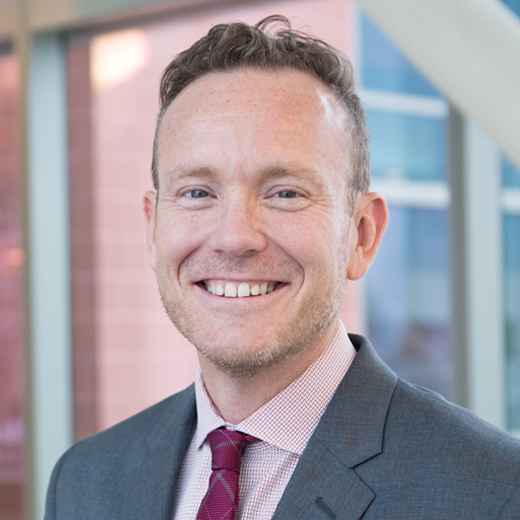[PODCAST] The Patient Voice: Incorporating Feedback into Your Strategies

Dennis Jolley, Chief Strategy and Communications Officer at Gillette Children's Specialty Healthcare
As a healthcare marketer, I strongly believe in the importance of listening to and understanding the patient voice. And today’s podcast helps guide hospitals and healthcare organizations of all sizes on how to do just that.
I had the opportunity to speak with Dennis Jolley, Chief Strategy and Communications Officer & Vice President for Institutional at Gillette Children's Specialty Healthcare this month about his presentation at SHSMD 2018, “Embracing the Patient Voice to Attract the Engaged Health Care Consumer.” Listen to the podcast right here, or keep reading for my key takeaways about incorporating the patient voice into healthcare strategies and marketing plans.
Related: The Secret to Better Patient Care in the Changing World of Healthcare
The Patient as Healthcare Consumer
We talk about healthcare consumerism and the retailization of healthcare a lot in this blog and on the podcast, but it’s an important introduction to the idea of finding the patient voice.
Healthcare has been slow to meet consumerism’s demands. But patients want and need something more than what’s become the status quo in traditional medicine. Jolley notes, “Organizations that are new to healthcare have a baseline understanding of what their potential customers want and need from them. But traditional healthcare, and particularly hospitals, are probably behind the curve on that.”
People have a mindset that “consumers buy blue jeans, not healthcare.” Meanwhile, too much of healthcare is driven not by what the patient wants, but what the hospital or organization wants. And that’s a problem.
So How Can You Implement Change?
A major challenge to addressing consumerism in a healthcare setting is that doctors and stakeholders are often resistant to the idea of the patient as a consumer. We have to work to shift the definition of consumerism. Rather than something that only applies in a retail space, the shift to “consumerism” can be defined as “The protection or promotion of the interest of customer and consumers.”
Jolley says that healthcare should be protecting and promoting the interests of customers—of patients. And that means more that simply making a better website or a bigger billboard.
Addressing consumerism means finding out what patients really need. And for Gillette Children's Specialty Healthcare, Jolley’s team used strategic assumption surfacing and testing - a process to identify and challenge underlying assumptions that guide your organizational strategy.
Gillette has been around for 121 years and was the first hospital in the nation specifically for children with disabilities. Clearly the providers have an immense amount of knowledge, but their assumptions about what patients need and want may be misguided.
Strategic assumption surfacing and testing was meant to address changing needs in healthcare consumerism. It’s not about patients telling the doctors how to do surgery, but rather informing how changing patient needs influence how we choose to deliver care. In other words:
- How do we engage with our families to make sure we’re delivering care in a way that’s effective, accessible, and meaningful to them?
- How do we communicate with families?
- How do we provide healing environments that are safe, comfortable, and modern?
- And finally, how do we meet their needs from a global perspective? Rather than focusing on the procedure at hand, how do we participate in proactive care planning for the future of the child?
The Patient Voice and How to Find It
Jolley’s team used provider assumptions as a basis for collecting information from patients. And in presenting that information to patient groups and hearing their responses, they discovered that some of their assumptions were accurate while others were entirely off-base.
Here were some of the methods used to gather information:
- Patient experience surveys
- Active patient groups (like a patient advisory board)
- An open call to engage and provide feedback
- Their Community Health Needs assessment
- Phone interviews
- Focus groups
- Provider groups
So what changed as a result of these findings?
- Their service delivery model, particularly for those who don’t live in the area. (Gillette has patients around the globe and in all 50 states, who can’t just drop in for a checkup.)
- How they deliver care in general.
- What care management means for their specialty and diverse populations.
- How they talk about themselves, what they do, and how they do it.
- How they define their care model.
How to Gather Support
I asked Jolley how he’s able to gather support from skeptical doctors for making some of these changes.
He pointed out that what patients want is rarely unreasonable or unrealistic. Things are evolving because everything around us is evolving, and healthcare systems cannot continue to deliver care the way they did 50, 30, or even 15 years ago, just because that’s how they’ve always done it.
The strategic assumption surfacing and testing really created a dialogue between the hospital and the patients. From this, doctors were able to see their own assumptions break down. Hearing their assumptions directly challenged helped even the most resistant doctors to see that patient needs were different than expected.
For example, many doctors are resistant to receiving patient reviews. But one piece of feedback they received was from a woman whose daughter had to have surgery at another hospital. The only information she could find online was a phone number and address for the doctor—not even a photo. She said she had anxiety about the lack of information—so why would we want to add to that?
In the end, if you want to make a change you have to be willing to take a step back. Ask yourself why you do things the way you do them. Then ask your patients how they feel about that. Finally, Jolley says, you must have the humility to be open to that feedback in order to make a change for the better.








